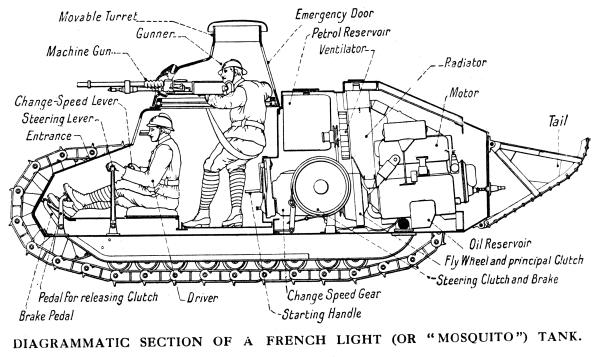|
R-3 Tank
R-3 was a proposed Romanian tank design for use in World War II. It was basically a variant of the Czechoslovak S-II-c tank prototype (known as the T-21 tank after 1939) which was going to be built in Romania because of the repeated acquisition failures. Because of political reasons and the limited industrial capacities of both Škoda Works and the Romanian industry, the design never entered production. History In the summer of 1940, Romania's traditional interwar arms delivery partners, France and Czechoslovakia, were under German occupation. Romania's armored forces were equipped with 126 light R-2 tanks, 75 Renault R-35 tanks (41 of which were interned Polish tanks), 35 R-1 tankettes and 75 obsolete Renault FT tanks. As the country was basically surrounded by hostile neighbours from all sides and the Renault R-35 tank deliveries were stopped, the Romanian Army sought to buy a medium tank. The chosen design was the Czechoslovak S-II-c prototype, the successor of the LT vz. ... [...More Info...] [...Related Items...] OR: [Wikipedia] [Google] [Baidu] |
Medium Tank
A medium tank is a classification of tanks, particularly prevalent during World War II which represented a compromise between the mobility oriented light tanks and the armour and armament oriented heavy tanks. A medium tank's classification is not actually based on weight, but off of tactical usage and intended purpose; for instance the German Panzerkampfwagen V Panther medium tank has a mass similar to contemporary Allied heavy tanks. The most widely produced, cost effective and successful tanks of World War II (the German Panzer IV, the Soviet T-34, and the American M4 Sherman) were all medium tank designs. Many of the medium tank lines became what are called main battle tanks in most countries. History The first tanks to carry the name "Medium" appeared in the First World War with the British Medium Mark A Whippet. It was smaller, lighter and faster than the British heavy tanks of the time and only carried machine guns. The medium tank doctrine came into use in the interwa ... [...More Info...] [...Related Items...] OR: [Wikipedia] [Google] [Baidu] |
Renault FT
The Renault FT (frequently referred to in post-World War I literature as the FT-17, FT17, or similar) was a French light tank that was among the most revolutionary and influential tank designs in history. The FT was the first production tank to have its armament within a fully rotating turret.Although a rotating turret had been a feature of some earlier tank designs or prototypes, and had been incorporated in armoured cars for several years, no tank with a turret had entered service. The Renault FT's configuration (crew compartment at the front, engine compartment at the back, and main armament in a revolving turret) became and remains the standard tank layout. Consequently, some armoured warfare historians have called the Renault FT the world's first modern tank. Over 3,000 Renault FT tanks were manufactured by French industry, most of them in 1918. After World War I, FT tanks were exported in large numbers. Copies and derivative designs were manufactured in the United States ( ... [...More Info...] [...Related Items...] OR: [Wikipedia] [Google] [Baidu] |
Tanks Of Romania
A tank is an armoured fighting vehicle intended as a primary offensive weapon in front-line ground combat. Tank designs are a balance of heavy firepower, strong armour, and good battlefield mobility provided by tracks and a powerful engine; usually their main armament is mounted in a turret. They are a mainstay of modern 20th and 21st century ground forces and a key part of combined arms combat. Modern tanks are versatile mobile land weapons platforms whose main armament is a large-caliber tank gun mounted in a rotating gun turret, supplemented by machine guns or other ranged weapons such as anti-tank guided missiles or rocket launchers. They have heavy vehicle armour which provides protection for the crew, the vehicle's munition storage, fuel tank and propulsion systems. The use of tracks rather than wheels provides improved operational mobility which allows the tank to overcome rugged terrain and adverse conditions such as mud and ice/snow better than wheeled vehicles, an ... [...More Info...] [...Related Items...] OR: [Wikipedia] [Google] [Baidu] |
.jpg)

